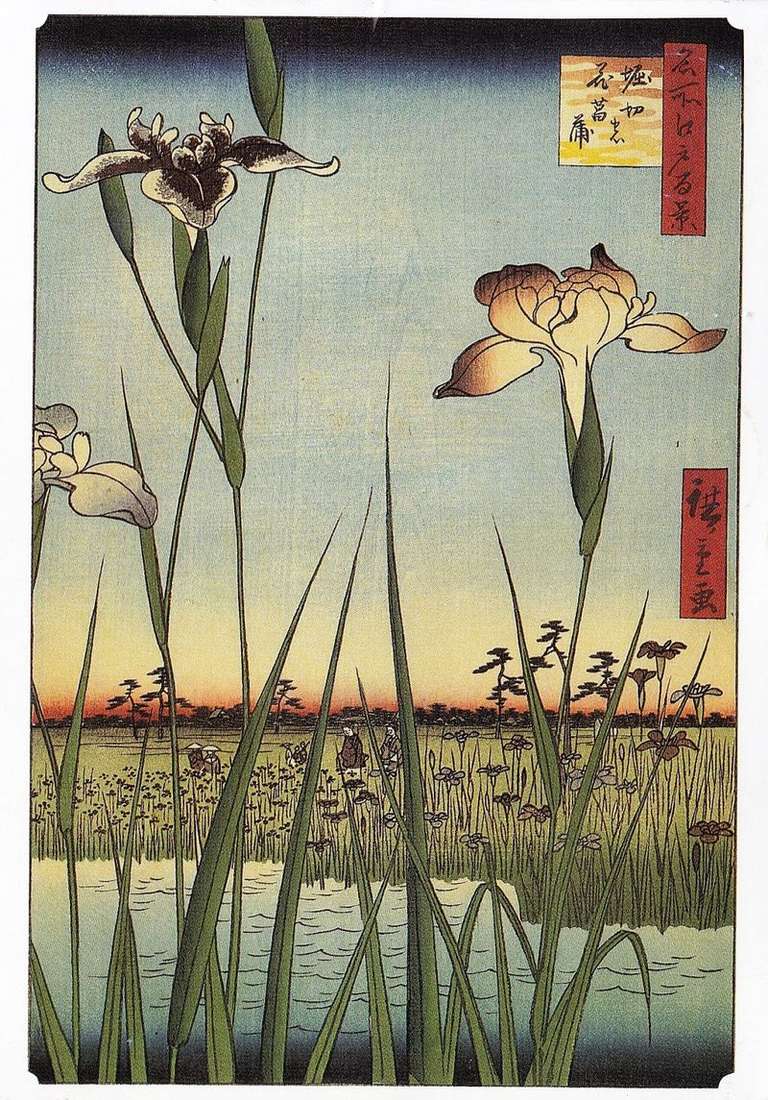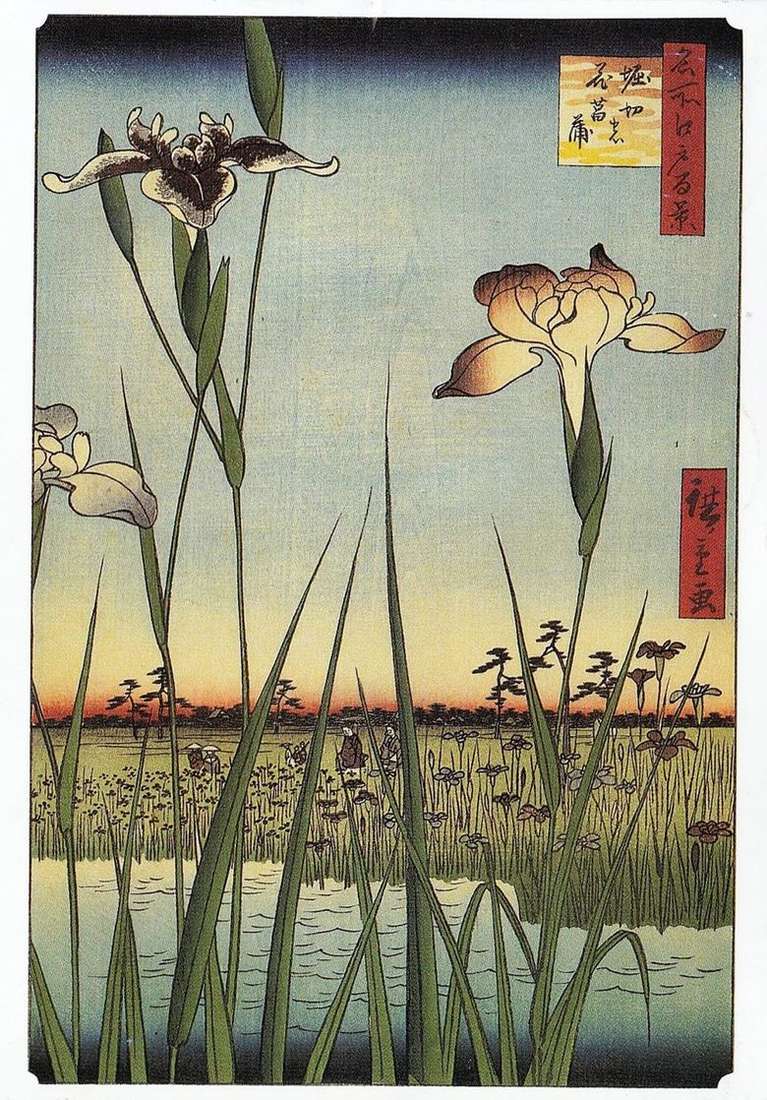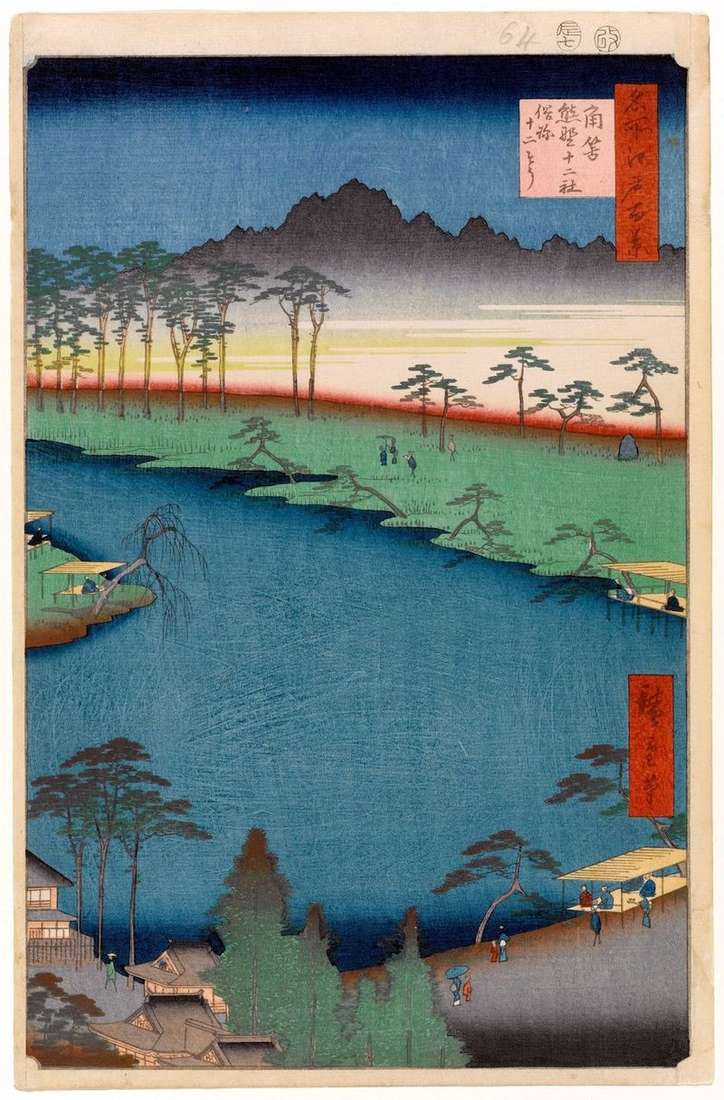
The village of Horikiri-mura, which was located to the north of the island of Mukoejima, southwest of the Ayasegawa River, was known for plantations of irises and peonies. Its land was located in the lowland, the soil was wet, so irises, requiring a lot of moisture, grew well here. In the second half of the Edo period, about five thousand irises of one hundred and thirty varieties grew here. They were grown in rice fields, wooden scaffolding lay between rows of flowers. Horikiri-mura was near Edo, it was customary to come here in the summer, at the time of flowering irises, for khans. The huge flowers of irises are depicted in the foreground of the engraving, they are decorative and ornamental.
In the background, prints are hardly distinguishable figures of citizens. These flowers were especially popular in the days of Hiroshige. They were particularly in great demand on May 5th – in the Boys’ Feast, as the flower was one of the main symbols of the holiday. He exerted his influence on the symbolism of modernity, which absorbed many of the components of the Japanese artistic tradition. Color changes in the sheet of the late edition touched the color of the irises of the foreground. The dark blue strip now passes not along the edge of the ox in the background, but along the bottom edge of the sheet. The strip of bokasi at the top edge of the engraving becomes wider.
 Iris en Horikiri – Utagawa Hiroshige
Iris en Horikiri – Utagawa Hiroshige Tsukudajima Island from the Eitaibashi Bridge by Utagawa Hiroshige
Tsukudajima Island from the Eitaibashi Bridge by Utagawa Hiroshige The Ayasagawa River, “The Bell’s Bell” by Utagawa Hiroshige
The Ayasagawa River, “The Bell’s Bell” by Utagawa Hiroshige Protocols to Mitsumata. Vakare-nofunti by Utagawa Hiroshige
Protocols to Mitsumata. Vakare-nofunti by Utagawa Hiroshige Iris à Horikiri – Utagawa Hiroshige
Iris à Horikiri – Utagawa Hiroshige Embankment Koumae by Utagawa Hiroshige
Embankment Koumae by Utagawa Hiroshige The Regokubasi Bridge and the Okavabat Quay by Utagawa Hiroshige
The Regokubasi Bridge and the Okavabat Quay by Utagawa Hiroshige Sanctuary of Kumano Juni in Tsunahadzu by Utagawa Hiroshige
Sanctuary of Kumano Juni in Tsunahadzu by Utagawa Hiroshige